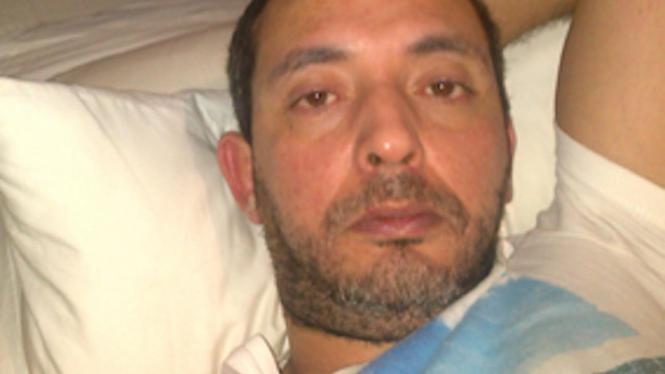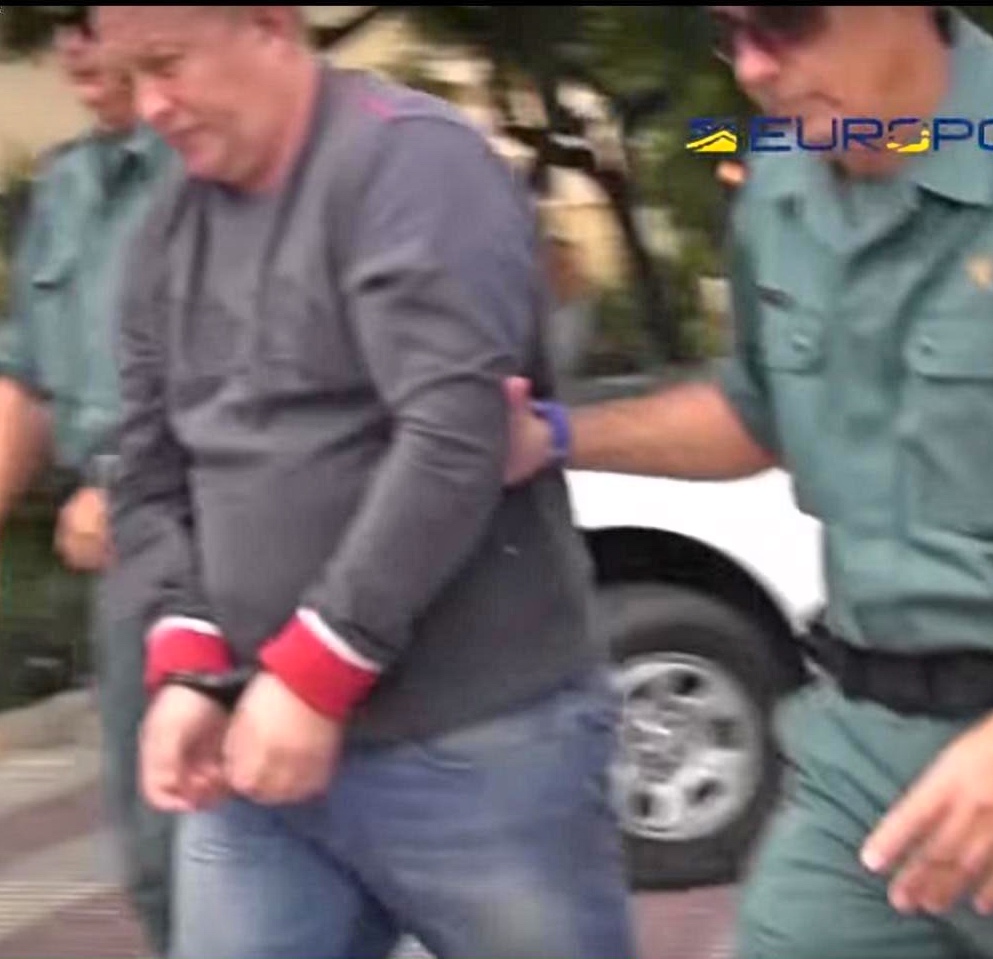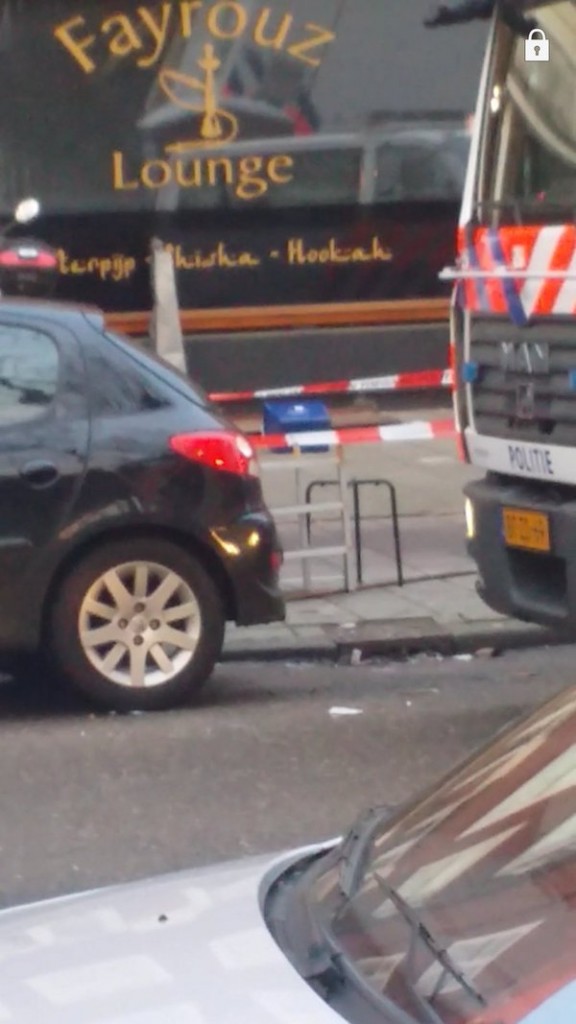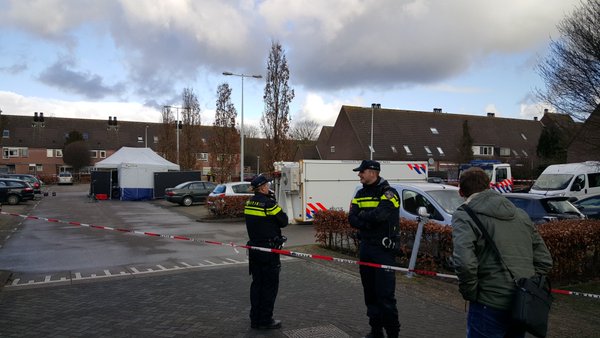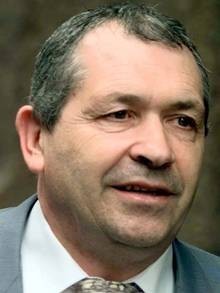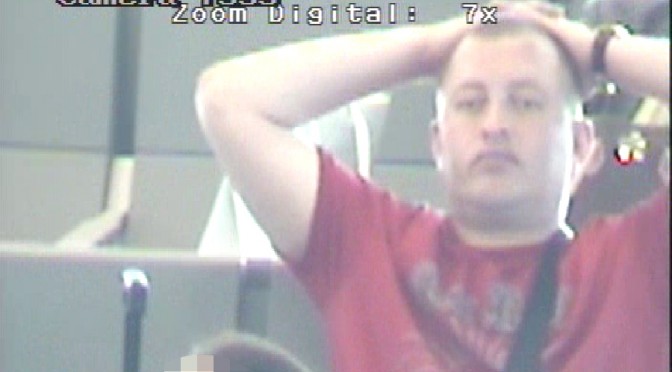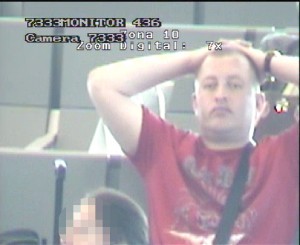STEFAN Eggermont was just pulling into a parking space in the dimly lit street near his Amsterdam home when the assassin came. Death came swiftly and without mercy or recognition. It was a “settlement of business” and the usual omerta code of silence would follow.
The 30-year-old father-of-one arrived in Conrad Street in his blue Fiat Punto at around 1.40am after spending the evening with brother Jordi watching Netherlands beat Brazil 3-0in the World Cup third place play-off in July this year.
Almost as soon as Stefan shut down the engine and opened his car door the assassin was upon him, riddling him with automatic gun fire. But Stefan was no gangster, he was a well-liked man working hard as a customer service manager at a web-based marketing firm. His only crime was that he lived near to and drove the same make and colour of car as the intended target.
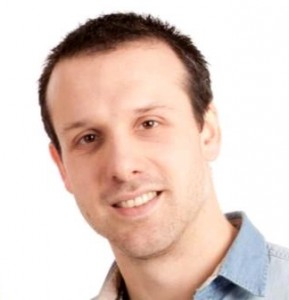
Stefan Eggermont: Just one of a number of innocents caught up in the bloody feud
He had become the first civilian casualty in a bloody war currently raging between two Dutch gangs over a missing £14 million cocaine shipment most of which was destined for the UK, which has now claimed at least 14 lives. When death came for him swiftly that evening Stefan was yards from his home where his partner and three-year-old child were waiting for him and yet he was in the wrong place at the wrong time. Finding no criminal or other motive in Stefan’s back story, Dutch detectives now believe the intended target was the brother of a man caught up in the feud, who drove the same car, lived nearby and often used Stefan’s parking spot.
According to Openbaar Ministerie, the Dutch justice ministry which is investigating the murders, the origin to this river of blood spills from a stolen batch of cocaine in the early part of 2012, when a gang known as the Turtles, ripped off a Dutch gang in the Belgian port of Antwerp. In March of that year customs in Antwerp seized 200 kilos of cocaine but unknown to them at the time, it was only part of the load. They believe now a batch of the drug had been stolen and had begun turning up in kilo amounts, selling for a lower than usual price.
The British Connections
At least two of the victims had links to a British gangster currently at large, named Robert Dawes, who in documents written by the Serious Organised Crime Agency, has been described as a “highly significant international criminal wanted for murder in Holland and drug importation in the UK”. Dawes was named in a Dutch court as the man who ordered the murder of innocent Dutch schoolteacher Gerard Meesters in November 2002.
Mr Meesters had been targeted because the criminals believed his sister Janette and her friend Madeleine Brussen had absconded with a shipment of drugs belonging to Dawes. Dutch phone taps later picked up the British gang saying the “fucking Thelma and Louise” pair had been taught a lesson and someone had paid with their life. British man, Daniel Sowerby, a foot soldier of the Dawes Organised Crime Group, is currently serving life for the shooting but he refused to say in court who had given the orders for fear of reprisals against his own family in the UK.
Wouter Laumans, respected Dutch crime journalist and co-author of recent book “Mocro Maffia”, charting the rise of the new Dutch Moroccan organised crime gangs explained: “The seizure In Antwerp was not reported in the media until recently so the gang thought all of it had been ripped. Then all hell has been let loose. There is no doubt in my mind that a lot of this cocaine was on its way to the UK where they can get a higher price for it. These guys are working with the British without a doubt.Its like some kind of Guy Ritchie film except its not funny.”
A trusted intermediary was dispatched by the Dutch Moroccan gang. Notorious Dutch underworld boss, Gwenette Martha; previously convicted of threats to Gerard Meesters before his death, knew the Turtle gang and resolved to extract several million euros as a fine in lieu of the missing cocaine. Whatever deal he struck did not appear to meet the expectations of his employers and Martha was then in the crosshairs of the gang which had hired him, believing he had double crossed them.
A failed assassination attempt before Christmas last year was finally fulfilled in May when Martha was shot dead in an Amsterdam surburb as he came out of a kebab shop. Martha, who had taken to wearing a bullet proof vest, was two days out of police custody himself after being caught with firearms in Dam Square. Police believed he had been on his way to “liquidate” a rival boss. When he came out of the kebab shop he was hit by 80 rounds from two or more AK 47 rifles. Bullet torn brickwork and twisted metal testified to the damage to nearby restaurants, homes and cars and to the sheer luck that no bystanders had been struck by rounds from the weapon.
Wouter Laumans said: “It was a miracle that a member of the public was not hit. But the miracles ended with Stefan Eggermont being shot and there will be more cases of Stefan if more is not done to control the situation.”
Most of the cocaine coming through Antwerp, estimated by the authorities to be 200 tonnes in 2012, is bound for the UK and Ireland. Cocaine will sell at around (Euros) 50,000 per kilo in the UK compared to (Euros) 30,000 in Netherlands with wholesale prices coming down over the past 10 years.
Death visits the man known as Scarface or Scarry
A second British link to the victims emerged in August this year when Samir “Scarface” Bouyakhrichan, 36, a major figure in the Dutch moroccan underworld and believed to be one of the investors in the missing cocaine was shot dead near Marbella, Spain. Like Gwenette Martha, Dutch investigators believe “Scarface” had done business with Spanish based Robert Dawes. Bouyakhrichan was also believed to be an investor in the £300 million worth of cocaine seized in Southampton in 2011, the largest seizure to date in the UK.
Bouyakhrichan had been arrested in Spain and extradited over the tragic death of 12-year-old Danny Gubbels. In July 2010 seven gunmen using AK 47’s shot up a trailer park home in Breda, Netherlands where the Gubbels family lived after a member of the family was suspected of stealing a large batch of cocaine. A ricochet from one of the rounds fired struck Danny and killed him. Two men, including Tyrone Gillard, from Leeds, were convicted of manslaughter and are currently serving 16 years. Bouyakhrichan, who was suspected of being one of the investors in the stolen load, was released after seven days of questioning but never charged.
The death of innocence and the AK-47
The shootings have shocked the Dutch public because of the brazen nature. In several incidents the gunmen have been using AK 47’s in their shootouts; this a measure against the popularity of the bullet proof vest which several of the victims were wearing to no avail. In a failed assassination attempt in an Amsterdam cafe recently two innocent bystanders were shot causing serious head injuries in one man and leg injuries in another.
For Janke Verhagen, Stefan Eggermont’s 32-year-old partner and mother of their three-year-old boy, the joy of the summer holiday with Stefan’s parents in Spain seems a lifetime ago.
“We had come back from Spain three days earlier,” she said.”That night he wanted to see the football with Jordi and a friend. When he didn’t come back on time I sent Stefan a text. It was just before I went out to see what the sirens were about so I had texted jokingly “Hey! you still alive?” it went out at 1.37am about the time he was shot. When I got there all I could see was a body lying under a white sheet next to our car, and then I knew. It has been like being in the middle of a Godfather movie.”
Only a few days after Stefan’s murder, Omar Lkhorf, who police believe was the intended target and has now fled abroad, knocked on her door.
“He was just a boy. He was crying and totally distraught. It was genuine. He said it was meant for him and he had come home 30 minutes early that night. I was angry I thought my god, just 30 minutes and maybe it would have been a different story, ” she said. “I am coping. But people don’t seem to understand that it could so easily be their loved one. All it took for Stefan to die was to be driving the same car and living in the area. That seems crazy to me.We need a response from the public.”
Last month Dutch police arrested a 26-year-old man in connection with Stefan’s death after confirming the firearm which killed him had been found at the suspect’s home. But he has told detectives he was holding the weapon for someone he will not name. The suspect does not fit the description of the assassin and he has only been charged with possession of a firearm.
Janke added: “He will get maybe two years but who is directing these young people to do these things? They are the people that need to be caught. The silence cannot continue.”

Stefan Eggermont crime scene
Netherland’s Openbaar Ministerie, (OM) the equivalent of the Crown Prosecution Service, which is handling the investigation, are braced for more assassinations to come. They are up against gangsters using state-of-the-art trackers and jammers to stay ahead of law enforcement. In Antwerp port they also had the ability to corrupt a customs officer, now serving 14 years and install malicious software into the ports computers to change cargo details so that they would be passed through any checks.
Last week the Dutch authorities had their first major success in what has become a huge investigation draining their resources. One of the ringleaders of one of the gangs involved was jailed for ten years for his role in the first murder which sparked the trail of killings. Benaouf Adaoui, 30, was convicted on Monday of his role in the murder of Najeb Bouhbouh.
When I spoke to the authorities a few weeks ago they were candid. They didn’t believe the killings were over. Spokesman Franklin Wattimena said: “This all started with the missing cocaine in Antwerp and the subsequent murder of Najeb Bouhbouh. We are warning all potential targets when intelligence is received as is our duty.We are also in a difficult situation because the people we are investigating have technology which is beating us. We thought the end to this feud came with Gwenette Martha’s death. That was not to be the case and we do not think it is at an end yet.”
The words of Mr Wattimena proved to be sadly prophetic at around 7.30pm (GMT) last night when 34-year-old Luana Luz Xavier was shot dead in front of her daughter and son in the street in the Amstelveen district of Amsterdam.
Brazilian by birth, she ran a successful clothes shop in Amsterdam’s Nine streets area. But more significantly she was the girlfriend of a kickboxer called Najb Himmich, who was at one time Gwenette Martha’s right hand man and, according to Dutch media sources, had taken charge of Martha’s organised crime group following his death. He had gone underground in recent months.
Wouter Laumans voiced fears that the war has now reached a new desperate level.
“So now they are targeting the wives and girlfriends of gangsters if they can’t find the targets themselves. This is a new low in the Netherlands,” he said.
THE DEATH TOLL:
October 18 2012: Najeb Bouhbouh, 34, gunned down outside the Crowne Plaza Hotel in Antwerp

Najeeb Bouhbouh
December 29 2012: Said El Yazidi, 21, and Youseff Lkhorf, 28 were shot dead in an AK 47 wild west shootout near an Amsterdam canal in which gang boss Benaouf Adaoui survived. It was in response to the murder of Najeb Boubouh. Pursuing police were also shot at by the assassins.
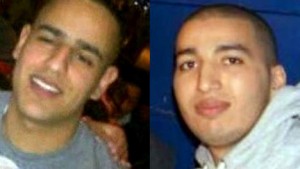
Said El Yazidi (left) and Youseff Lkhorf (right)
March 16 2013: Rida Bennajem, 21, shot dead Amsterdam. Believed to be one of the hitmen involved in murder of Bouhbouh
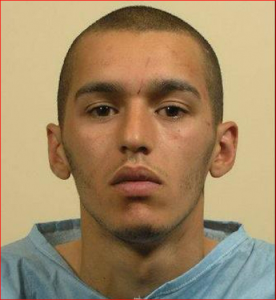
Rida Bennajim
May 26 2013: Souhail Laachir, 26, shot dead Amsterdam. He was involved in the finances of Benaouf Adaoui
August 24 2013: Chris Bouman, 36, involved in luring Najeb Bouhbouh to the Crowne Plaza, committed suicide in prison awaiting charges on October 18 2012 murder. Police believe he had been threatened while in custody.
February 20 2014: Alexander Gillis,30, friend of Gwenette Martha shot dead Amsterdam
March 22 2014: Mohammed El Mayouri, 30, a shooter for the Benaouf group shot dead Amsterdam
May 22 2014: Gwenette Martha, best friend of Najeb Bouhbouh, shot dead Amsterdam

Gwenette Martha
July 13 2014: Stefan Eggermont shot dead in case of mistaken identity. Investigators believed that the shooters were targeting Omar Lkhorf brother of Youseff Lkhorf killed in December 2012. Omar Lkhorf drove the same car as Stefan, often parked in a similar spot and lived nearby.
August 16 2014: Derkiaoui Van Der Meijden, 34, shot dead Amsterdam. Associate of Gwenette Martha and hit man believed to be involved in the December 29 2012 shootings. Wearing a bullet proof vest he was gunned down by two men brandishing AK 47’s.

Derkiaoui Van Der Meijden
August 28 2014: Samir Bouyakhrichan, 36, head of another organised crime group and friend of Benaouf group shot dead Marbella, Spain.
September 3 2014: Massod Amin Hosseini, 26 shot dead Amsterdam. Massod was known on the periphery of both groups.
December 9 2014: Luana Luz Xavier, 34, shot dead in Amstelveen in the street as her two children stood next to her. She was the girlfriend of Najib Himmich.
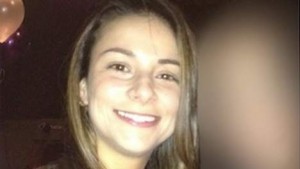
Luana Luz Xavier

